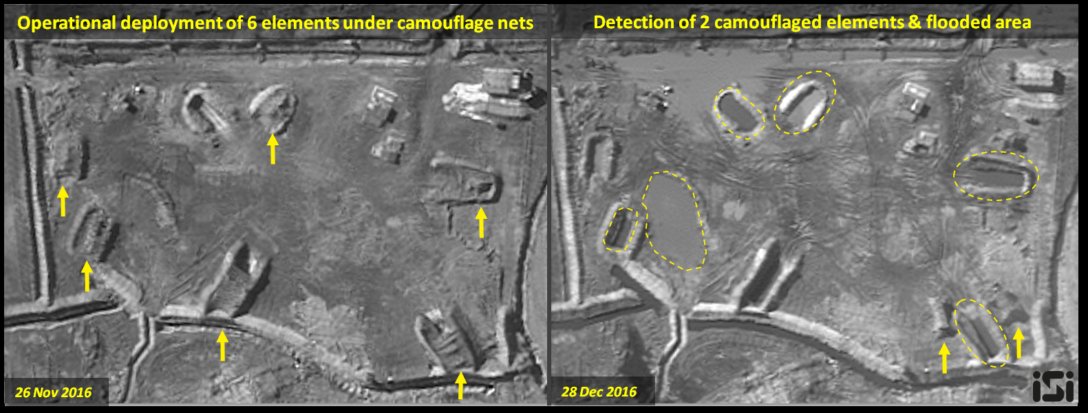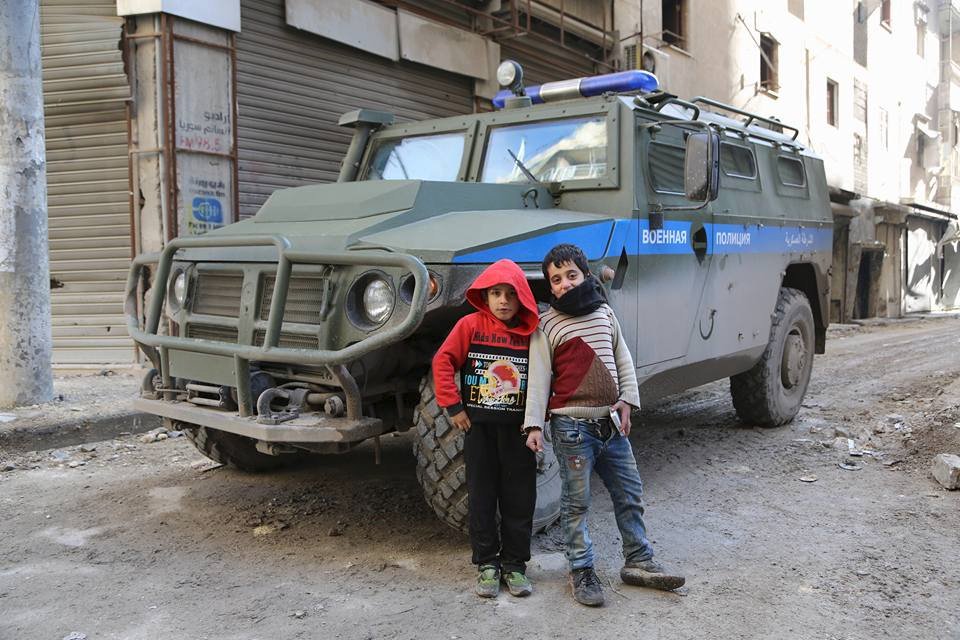One night this past fall, a U.S. radar plane flying a routine pattern over Syria picked up a signal from an incoming Russian fighter jet.
The American crew radioed repeated warnings on a frequency universally used for distress signals. The Russian pilot didn’t respond.
Instead, as the U.S. plane began a wide sweep to the south, the Russian fighter, an advanced Su-35 Flanker, turned north and east across the American plane’s nose, churned up a wave of turbulent air in its path and briefly disrupted its sensitive electronics.
“We assessed that guy to be within one-eighth of a mile—a few hundred feet away—and unaware of it,” said U.S. Air Force Col. Paul Birch, commander of the 380th Expeditionary Operations Group, a unit based in the Persian Gulf.
A Russian Su-35 Flanker fighter shadows U.S. F-15s as they refuel over Syria in September. The photo, taken by a camera on one of the American planes, shows the Russian pilot far closer than the three-mile safety limit set in a 2015 U.S.-Russian agreement. PHOTO: U.S. AIR FORCE The skies above Syria are an international incident waiting to happen, according to American pilots.
The skies above Syria are an international incident waiting to happen, according to American pilots. It is an unprecedented situation in which for months U.S. and Russian jets have crowded the same airspace fighting parallel wars, with American pilots bombing Islamic State worried about colliding with Russian pilots bombing rebels trying to overthrow Syrian President Bashar Al-Assad. Russian warplanes, which also attack Islamic State targets, are still flying daily over Syria despite the recent cease-fire in Moscow’s campaign against the anti-Assad forces, according to the U.S. Air Force.
The U.S. and Russian militaries have a year-old air safety agreement, but American pilots still find themselves having close calls with Russian aviators either unaware of the rules of the road, or unable or unwilling to follow them consistently.
“Rarely, if ever, do they respond verbally,” said Brig. Gen. Charles Corcoran, commander of the 380th Air Expeditionary Wing, who flies combat missions in a stealth fighter. “Rarely, if ever, do they move. We get out of the way. We don’t know what they can see or not see, and we don’t want them running into one of us.”... :>
...But the Russians are prone to ignoring the conventions of air safety, according to the American pilots. Planes world-wide carry transponders that emit a four-digit code allowing air-traffic controllers to identify them, a practice called squawking. Russian planes over Syria don’t squawk, and they appear as an unidentified bleep to allied radar installations.
Nor do the Russians usually answer “guard calls,” urgent summons on a common emergency radio frequency. In one eight-hour shift on Dec. 11, for instance, the crew of a U.S. radar plane, called an AWACS, made 22 such calls to some 10 Russian planes and received not a single response. A few of the Russians approached within five miles of allied aircraft.
The controller aboard the AWACS scattered U.S. planes to keep them clear of the Russians. “We’ve had several co-altitude incidents,” the officer said, referring to planes flying too close together.
Russian pilots have sometimes broken their silence when contacted by a female air-traffic controller.In early September, a female U.S. air-surveillance officer spotted an unidentified plane approaching allied aircraft over Syria. “You’re operating in the vicinity of coalition aircraft,” she warned the pilot.
A heavy Russian accent emerged through the static: “You have a nice voice, lady. Good evening.”..
...That’s not always the case. In September, an Su-35 shadowed an American F-15 fighter as it ended a bombing run over Syria and pulled up to a tanker plane to refuel. The U.S. pilot filmed the Russian running alongside the American planes, about a mile-and-a-half away, said Col. Birch.
At times, Russian planes plow through tightly controlled groupings of allied aircraft over Raqqa. Russian bombers, flying to Syria via Iran, have crossed Iraq and disrupted allied flight patterns over the battlefields of Mosul.
Lt. Col. August “Pfoto” Pfluger, a stealth-fighter pilot, witnessed such an incident over Iraq in August.



 I was questioning it as well.
I was questioning it as well.





 I fail once more...
I fail once more...
 franco
franco
